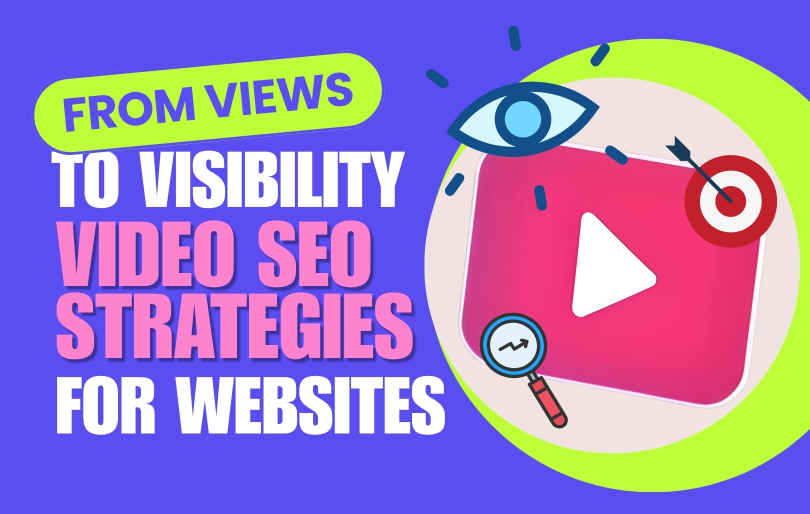From Views to Visibility: Advanced Video SEO Strategies for Websites
In today’s digital landscape, video content is more than just a visual treat; it’s a powerful tool for driving traffic and enhancing online visibility. While millions of videos compete for attention, the difference between mere views and substantial visibility lies in your effective and advanced video SEO strategies for websites. As search engines evolve, so too must our techniques for optimizing video content.
This article dives into advanced tactics that will not only increase your rankings but also ensure your videos stand out in a crowded marketplace. From leveraging metadata to enhancing viewer engagement, we’ll explore the essential steps to transform your video strategy and amplify your website’s reach. Get ready to unlock the full potential of your video assets and move beyond the basics, positioning your content where it truly deserves to be—front and center.
The Power of Video SEO in Today’s Digital Landscape

In the current digital era, video content has emerged as a dominant force in online communication. Its compelling nature can capture and hold the audience’s attention far more effectively than text or static images. However, with the explosion of video content on the internet, simply producing high-quality videos is not enough to guarantee visibility. This is where video SEO marketing and conversions come into play. Video SEO involves optimizing your video content to improve its ranking on search engine results pages (SERPs), thereby increasing its discoverability and viewership. The significance of Video SEO cannot be overstated. Search engines like Google and YouTube have sophisticated algorithms that determine which videos appear at the top of search results. These algorithms consider various factors, including relevance, viewer engagement, and metadata. By optimizing these elements, you can enhance your video’s chances of appearing in search results, which in turn can lead to increased traffic to your website. A well-executed Video SEO strategy can transform your video assets from being mere content pieces to powerful tools that drive traffic, generate leads, and boost conversions. Moreover, the rise of mobile internet usage has further amplified the importance of video SEO. With more users accessing video content on their smartphones and tablets, ensuring your videos are optimized for mobile search is crucial. This includes considering factors like video loading speed, mobile-friendly formats, and responsive design. In essence, Video SEO is not just about getting more views; it’s about reaching the right audience and delivering a seamless viewing experience across all devices.
Beyond Views: What True Video Visibility Really Means

True video visibility goes far beyond simple view counts. It reflects how effectively your content engages the right audience, drives meaningful interactions, and contributes to broader marketing objectives. Focusing on quality metrics ensures your videos generate real impact for your brand.
Key Metrics Defining True Video Visibility:
- Audience Retention: Measures how long viewers watch content.
- Engagement Rate: Likes, comments, shares, and interactions.
- Click-Through Rate (CTR): Visitors following links from videos.
- Conversion Rate: Percentage taking desired actions post-viewing.
- Playback Locations: Platforms and pages driving traffic.
- Demographics Reach: Ensures videos reach target audience segments.
- Watch Time: Total duration users spend viewing videos.
- Social Sharing: Indicates content spread and organic reach.
- Recommendations & Suggestions: Platform-driven content promotion.
- Return on Investment (ROI): Measures video effectiveness for business goals.
Key Components of Video SEO
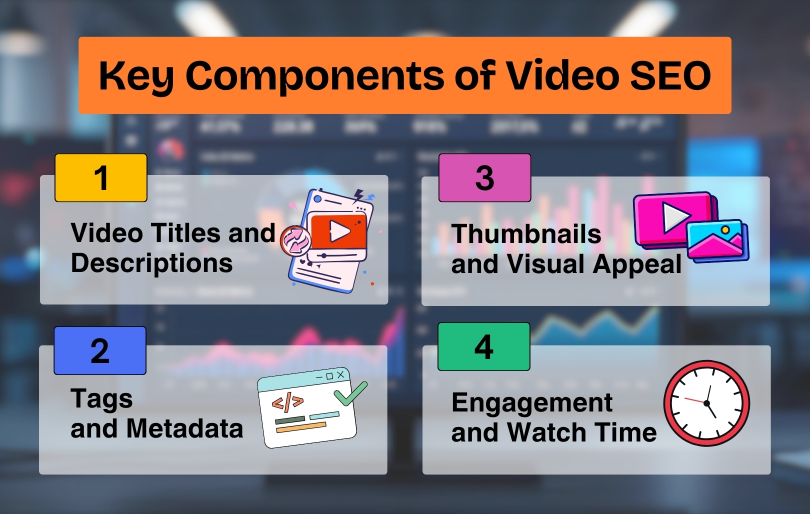
In today’s digital landscape, optimizing videos for search engines is essential for visibility and engagement. Effective Video SEO combines strategic keyword use, metadata optimization, captions, and transcripts, helping your content reach the right audience while boosting rankings and online performance.
Video SEO is essential for boosting online visibility and engagement. Optimizing each element of your video ensures it ranks higher on search engines, attracts the right audience, and converts views into meaningful interactions for your business or brand.
1. Video Titles and Descriptions
Crafting clear, keyword-rich titles and descriptions is crucial. These elements inform search engines and viewers about your content, improving relevance, click-through rates, and overall discoverability. A well-written title and description set expectations and enhance engagement.
2. Tags and Metadata
Tags and metadata help search engines understand the context of your video. Properly applied tags, categories, and structured metadata improve indexing, making it easier for your target audience to find your content across platforms.
3. Thumbnails and Visual Appeal
Eye-catching thumbnails attract viewers and increase click-through rates. A compelling thumbnail paired with a descriptive title encourages users to watch, boosting engagement signals that search algorithms use to rank videos higher.
4. Engagement and Watch Time
User interaction metrics, such as watch time, likes, comments, and shares, significantly impact video rankings. Encouraging viewers to engage with your content signals quality to search engines, enhancing your video’s visibility and reach, just like in product video marketing strategies.
Creating Compelling Thumbnails and Titles that Increase CTR
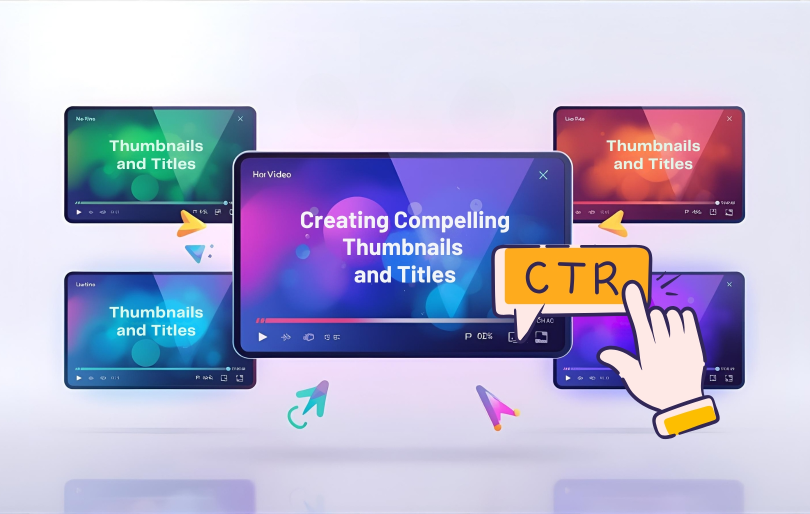
Thumbnails and titles are the first elements viewers notice, playing a vital role in whether they click on your video. They serve as the video’s initial impression and directly influence Click-Through Rate (CTR), making it essential to design them carefully to enhance visibility and engagement. Crafting the right thumbnail design is crucial, as shown in optimizing video ads for mobile devices.
An effective thumbnail should be visually appealing, high-quality, and clearly convey the video’s content. Using relevant imagery and text overlays can help communicate the key message, but text must remain clear and readable even on smaller screens. Consistent thumbnail design across videos also supports brand recognition and trust.
Video titles should be informative, engaging, and include relevant keywords for SEO, while accurately reflecting the content. Avoid clickbait, as misleading titles can increase bounce rates and harm rankings. Instead, craft titles that spark curiosity and encourage viewers to watch. Testing different title variations is recommended to determine which performing best in terms of CTR and audience engagement.
By strategically optimizing thumbnails and titles, creators can maximize video reach, improve user engagement, and strengthen their overall video SEO performance.
Leveraging Video Schema Markup for Rich Search Results
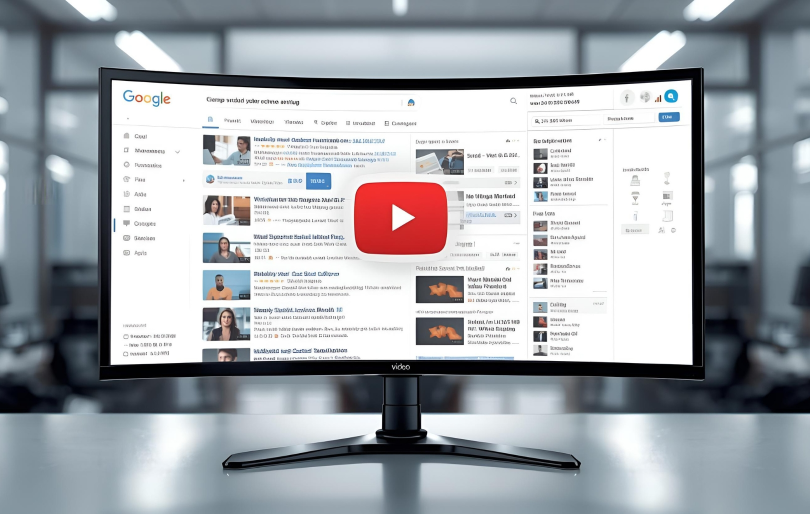
Video schema markup is a type of structured data added to video content to help search engines understand and index it more effectively. By implementing this markup, videos can appear as rich search results featuring thumbnails, descriptions, timestamps, and other interactive elements, increasing visibility, clicks, and engagement. The markup involves adding specific HTML code to your website that provides key details about the video, such as title, description, duration, and upload date. These details enable search engines to generate rich snippets, helping your video stand out from competitors and encouraging users to watch. Beyond improving visibility, video schema markup enhances user experience by showing important information directly in search results, which can lead to higher click-through rates, increased traffic, and improved SEO performance. Tools like Google’s Structured Data Markup Helper or professional web developers can assist in implementing the markup correctly, ensuring your videos are fully optimized for search engines. Overall, video schema markup is a powerful strategy for boosting both discoverability and user engagement.
Leveraging Social Media for Video Visibility

Social media platforms are essential tools for increasing video visibility and driving traffic to your website. Strategically sharing videos on platforms like Facebook, Instagram, Twitter, and LinkedIn allows you to reach larger and more relevant audiences. One effective way to do this is through social media marketing tips for a small business. Native video uploads on Facebook and Instagram generally perform better than external links, gaining higher feed priority and engagement. Optimizing videos for each platform—considering aspect ratio, length, and thumbnail design—further enhances performance, while features like Facebook Premiere can generate anticipation and boost initial views.
On Twitter, short, attention-grabbing videos paired with relevant hashtags and engaging captions perform well. LinkedIn is ideal for professional and educational content, such as tutorials, case studies, or industry insights, to provide value to your network. Additionally, social media advertising offers targeted options on platforms like Facebook, Instagram, and YouTube, enabling you to reach specific demographics and user interests. By combining organic strategies with paid promotions, you can maximize your video’s reach, engagement, and overall visibility, ensuring it effectively supports your website traffic and brand goals.
Advanced Techniques to Optimize Videos for Search Engines
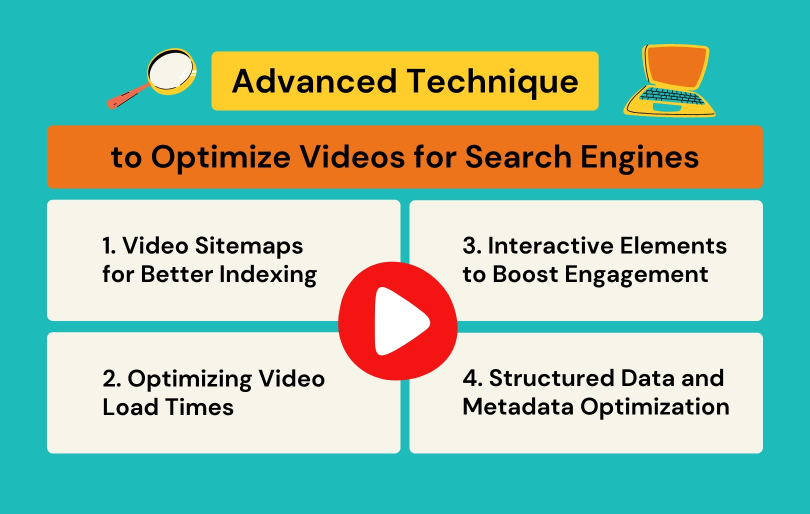
Optimizing videos for search engines goes beyond basic SEO practices. Advanced techniques, including structured data, fast load times, and interactive elements, can significantly improve visibility, engagement, and ranking, ensuring your video content reaches the right audience effectively.
1. Video Sitemaps for Better Indexing
Submitting a video sitemap helps search engines discover and index your content accurately. By providing details like titles, descriptions, thumbnails, and durations, you increase the likelihood that your videos appear in relevant search results, driving more organic traffic.
2. Optimizing Video Load Times
Slow videos can hurt SEO and user experience. Utilizing content delivery networks (CDNs), compressing files, and implementing adaptive bitrate streaming ensures fast loading, reducing bounce rates, and keeping viewers engaged across all devices and connection speeds.
3. Interactive Elements to Boost Engagement
Incorporating clickable links, polls, and quizzes within videos encourages viewer interaction. Higher engagement signals to search engines that your content is valuable, improving rankings while keeping your audience involved and more likely to complete desired actions.
4. Structured Data and Metadata Optimization
Adding schema markup and optimizing video metadata like titles, descriptions, and tags improves search engine understanding of your content. Properly structured data enhances visibility in rich results, increases click-through rates, and drives qualified traffic to your site.
Analyzing Video Performance with Analytics Tools
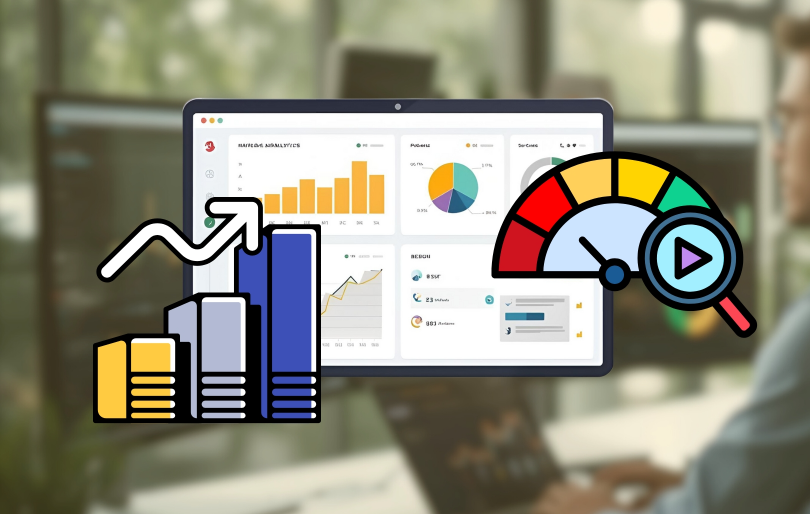
To optimize your video SEO strategy, it’s essential to regularly analyze your video performance using analytics tools. These tools provide valuable insights into how your videos are performing, allowing you to make data-driven decisions to improve visibility and engagement. Understanding key metrics and trends can help you identify what’s working, what’s not, and where there are opportunities for enhancement. Articles like Google Analytics for e-commerce success can provide deep insight into your video performance.
Google Analytics is a powerful tool for tracking video performance on your website. By setting up event tracking, you can monitor how users interact with your video content, including metrics such as play rate, watch time, and completion rate. Google Analytics also allows you to track the source of your video traffic, providing insights into which channels are driving the most views and engagement. This information can help you refine your distribution strategy and focus on the platforms that yield the best results.
YouTube Analytics offers a wealth of data specific to your YouTube videos. Key metrics to monitor include views, watch time, audience retention, and engagement actions such as likes, comments, and shares. YouTube Analytics also provides demographic information about your viewers, such as age, gender, and geographic location. This data can help you understand your audience better and tailor your content to meet their preferences and needs. Additionally, YouTube Analytics allows you to track the performance of individual videos and compare them to identify trends and patterns.
Other analytics tools, such as Wistia, Vimeo, and Vidyard, offer advanced video analytics and insights. These platforms provide detailed metrics on viewer behavior, including heatmaps that show where viewers are most engaged and where they drop off. This information can help you optimize your video content to maximize engagement and retention. Additionally, these tools often integrate with other marketing platforms, allowing you to track video performance in the context of your broader marketing efforts.
Future Trends: AI, Voice Search, and the Next Wave of Video SEO
The landscape of Video SEO is constantly evolving, and staying ahead of emerging trends is crucial for maintaining visibility and engagement. One of the most significant developments is the integration of Artificial Intelligence (AI). AI-powered tools can analyze data, identify effective keywords, predict viewer preferences, and even generate transcripts and captions automatically, helping optimize video content more efficiently.
Voice search is another major trend reshaping Video SEO. With smart assistants like Alexa, Google Assistant, and Siri becoming widespread, optimizing videos for conversational, long-tail queries is increasingly important. Videos that answer common questions or provide solutions to specific problems are more likely to appear in voice search results, boosting discoverability.
The rise of immersive technologies, such as Virtual Reality (VR) and Augmented Reality (AR), represents the next frontier in Video SEO. VR can transport viewers to immersive environments, enhancing engagement, while AR overlays digital elements onto real-world scenes, creating interactive experiences. As these technologies gain traction, optimizing video content for VR and AR will become essential.
In summary, advanced Video SEO strategies—including AI optimization, voice search readiness, and immersive content—are key to maximizing visibility, engagement, and long-term competitiveness in the evolving digital landscape. For small business owners in the DMV area looking to stay ahead with future-ready marketing, Adzeem offers expert video marketing services in MD or VA, designed to elevate brand visibility through compelling visuals and cutting-edge SEO practices.
